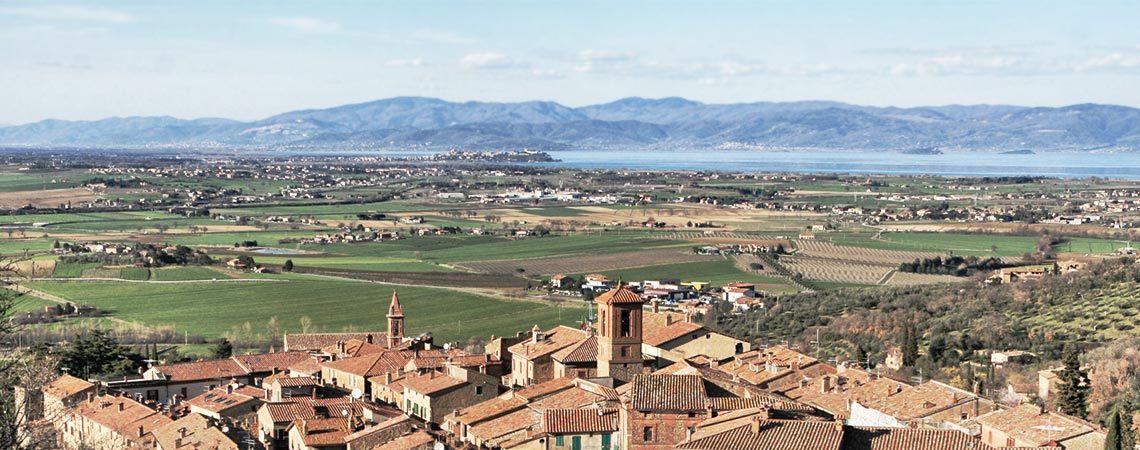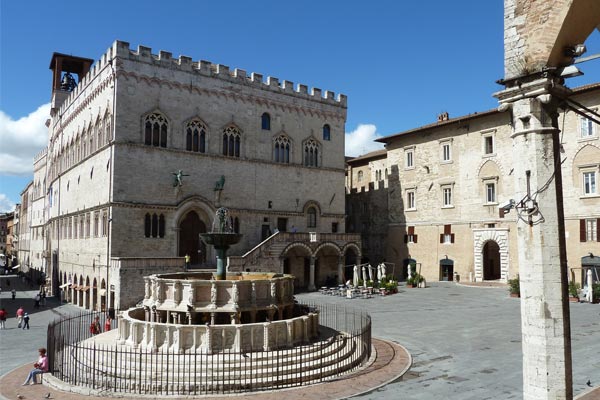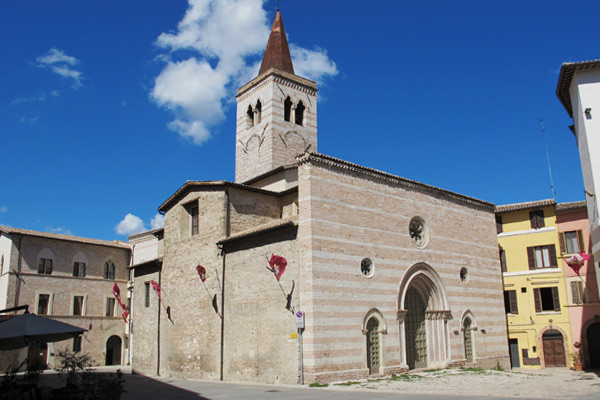Agriturismo I Frati, con sede legale in Via della Torre, 105 Paciano 06060 (PG), P.IVA 01820270542 (in seguito, “Titolare”), in qualità di titolare del trattamento, La informa ai sensi dell’art. 13 D.Lgs. 30.6.2003 n. 196 (in seguito, “Codice Privacy”) e dell’art. 13 Regolamento UE n. 2016/679 (in seguito, “GDPR”) che i Suoi dati saranno trattati con le modalità e per le finalità seguenti:
1 Titolare del trattamento:
Il Titolare del trattamento è: Agriturismo I Frati, con sede legale in Via della Torre, 105 Paciano 06060 (PG)
L’elenco aggiornato dei responsabili e degli incaricati al trattamento è custodito presso la sede legale del Titolare del trattamento.
2 Oggetto del trattamento:
Il Titolare tratta i dati personali – in seguito, “dati personali” o anche “dati”) da Lei eventualmente comunicati in occasione della conclusione di contratti per i servizi o prodotti venduti dal Titolare.
3 Finalità del trattamento:
I Suoi dati personali sono trattati:
a) I dati personali che lei fornirà attraverso questo sito web o direttamente al Titolare sono trattati senza il Suo consenso espresso (art. 6 lett. b), e) del RGPD), unicamente per le seguenti Finalità di Servizio:
- concludere i contratti per i servizi del Titolare
- adempiere agli obblighi precontrattuali, contrattuali e fiscali derivanti da rapporti con Lei in essere
- adempiere agli obblighi previsti dalla legge, da un regolamento, dalla normativa comunitaria o da un ordine dell’Autorità
- esercitare i diritti del Titolare, ad esempio interessi legittimi o il diritto di difesa in giudizio
b) I dati personali che lei fornirà attraverso questo sito web o direttamente al Titolare saranno invece trattati solo previo Suo specifico e distinto consenso (art. 7 RGPD), per le seguenti Finalità di Marketing:
- inviarLe via e-mail, posta e/o sms e/o contatti telefonici, comunicazioni commerciali o newsletter o altro materiale pubblicitario su prodotti o servizi offerti dal Titolare.
- nviarLe via e-mail questionari per la rilevazione del grado di soddisfazione sulla qualità dei servizi.
Le segnaliamo che se siete già nostri clienti, potremo inviarLe comunicazioni commerciali o newsletter relative a servizi e prodotti del Titolare analoghi a quelli di cui ha già usufruito, salvo Suo revoca del consenso già espresso.
4 Modalità, durata del trattamento e sicurezza dei dati:
I Suoi dati personali sono sottoposti a trattamento sia cartaceo che elettronico e/o automatizzato.
Il Titolare tratterà i dati personali per il tempo necessario per adempiere alle finalità di cui sopra e comunque per non oltre 10 anni dalla cessazione del rapporto per le Finalità di Servizio (3.a) e per non oltre 2 anni dalla raccolta dei dati per le Finalità di Marketing (3.b).
Il Titolare dichiara di aver adottato misure tecniche e organizzative idonee per l’assolvimento degli obblighi previsti dal RGPD. In particolare, il Titolare dichiara di aver attivato procedure interne per salvaguardare la sicurezza dei dati (sia elettronici che cartacei), mediante cifratura, misure di backup e disaster recovery e misure di protezione della propria rete tramite firewall, antivirus o sistemi di prevenzione da accessi abusivi. Il titolare dichiara di aver altresì verificato l’esistenza di uguali misure di sicurezza presso i propri fornitori che forniscono servizi di hosting collegati alle funzionalità di questo sito web.
5 Altri destinatari dei dati:
Il Titolare tratta internamente i dati raccolti e li utilizza per lo svolgimento della propria attività. Non vi sono altri destinatari dei dati, ad eccezione dei destinatari previsti dagli obblighi di legge.
6 Trasferimento dati
I dati personali, qualora vengano acquisiti dal sito web, sono conservati su server ubicati in Italia o comunque all’interno dell’Unione Europea. Resta in ogni caso inteso che il Titolare, ove si rendesse necessario, avrà facoltà di spostare i server anche extra-UE. In tal caso, il Titolare assicura sin d’ora che il trasferimento dei dati extra-UE avverrà in conformità alle disposizioni di legge applicabili, previa stipula delle clausole contrattuali standard previste dalla Commissione Europea e garantendo sempre la sicurezza del trasferimento e dopo aver verificato l’esistenza presso il nuovo fornitore di idonee misure di sicurezza e dell’assenza di utilizzi non autorizzati dei dati.
7 Diritti dell'interessato
Nella Sua qualità di interessato, lei può esercitare tutti i diritti di cui all’art. 15 RGPD e precisamente i diritti di:
- ottenere la conferma dell'esistenza o meno di dati personali che La riguardano, anche se non ancora registrati, e la loro comunicazione in forma intelligibile;
- ottenere l'indicazione:
- a) dell'origine dei dati personali
- b) delle finalità e modalità del trattamento
- c) della logica applicata in caso di trattamento effettuato con l'ausilio di strumenti elettronic
- d) degli estremi identificativi del titolare, dei responsabili e del rappresentante designato ai sensi dell'art. 5, comma 2 Codice Privacy e art. 3, comma 1, RGPD
- e) dei soggetti o delle categorie di soggetti ai quali i dati personali possono essere comunicati o che possono venirne a conoscenza in qualità di rappresentante designato nel territorio dello Stato, di responsabili o incaricati
- ottenere:
- a) l'aggiornamento, la rettificazione ovvero, quando vi ha interesse, l'integrazione dei dati
- b) la cancellazione, la trasformazione in forma anonima o il blocco dei dati trattati in violazione di legge, compresi quelli di cui non è necessaria la conservazione in relazione agli scopi per i quali i dati sono stati raccolti o successivamente trattati
- c) l'attestazione che le operazioni di cui alle lettere a) e b) sono state portate a conoscenza, anche per quanto riguarda il loro contenuto, di coloro ai quali i dati sono stati comunicati o diffusi, eccettuato il caso in cui tale adempimento si rivela impossibile o comporta un impiego di mezzi manifestamente sproporzionato rispetto al diritto tutelato
- opporsi, in tutto o in parte:
- a) per motivi legittimi al trattamento dei dati personali che La riguardano, ancorché pertinenti allo scopo della raccolta
- b) al trattamento di dati personali che La riguardano a fini di invio di materiale pubblicitario o di vendita diretta o per il compimento di ricerche di mercato o di comunicazione commerciale, mediante l’uso di sistemi automatizzati di chiamata senza l’intervento di un operatore mediante e-mail e/o mediante modalità di marketing tradizionali mediante telefono e/o posta cartacea. Si fa presente che il diritto di opposizione dell’interessato, esposto al precedente punto b), per finalità di marketing diretto mediante modalità automatizzate si estende a quelle tradizionali e che comunque resta salva la possibilità per l’interessato di esercitare il diritto di opposizione anche solo in parte. Pertanto, l’interessato può decidere di ricevere solo comunicazioni mediante modalità tradizionali ovvero solo comunicazioni automatizzate oppure nessuna delle due tipologie di comunicazione
Ove applicabili, ha altresì i diritti di cui agli artt. 16-21 RGPD (Diritto di rettifica, diritto all’oblio, diritto di limitazione di trattamento, diritto alla portabilità dei dati, diritto di opposizione), nonché il diritto di reclamo all’Autorità Garante.
8 Modalità di esercizio dei diritti
L’interessato potrà in qualsiasi momento esercitare i propri diritti inviando:
- Una semplice comunicazione via email a info@agriturismoifrati.it
- Una comunicazione scritta, via posta ordinaria, a: Agriturismo I Frati, via della Torre, 105 Paciano 06060 (PG) Italy
Informativa sui Cookie e files di registro
Per cookie si intende un dato informativo che viene trasmesso dal sito web al computer dell'Utilizzatore al fine di permetterne una rapida identificazione e migliorare l'esperienza di navigazione. Secondo quanto disposto dal Garante Privacy, Registro dei provvedimenti n. 229 dell'8 maggio 2014 “Individuazione delle modalità semplificate per l'informativa e l'acquisizione del consenso per l'uso dei cookie” - 8 maggio 2014 (Pubblicato sulla Gazzetta Ufficiale n. 126 del 3 giugno 2014), questo sito utilizza solo cookie tecnici o cookie di terze parti, che vengono installati automaticamente a seguito dell’accesso al sito, per finalità limitate alla normale navigazione e senza alcun tracciamento o profilazione dell'utente e delle preferenze e senza erogazione di contenuti pubblicitari di alcun genere:
- _ga: cookie di tipo “tecnico” installato da terze parti, allo scopo di incrementare le stati stiche di accesso (Google Analytics), durata 24 mesi;
- _gat: cookie di tipo “tecnico”, ha lo scopo di monitorare la sessione, durata limitata ad una sola sessione di navigazione;








